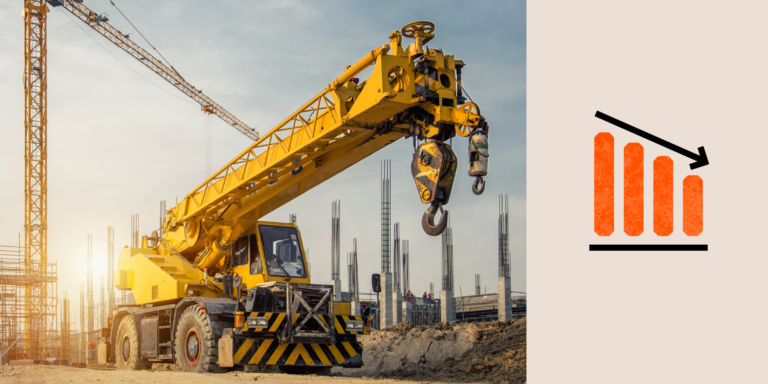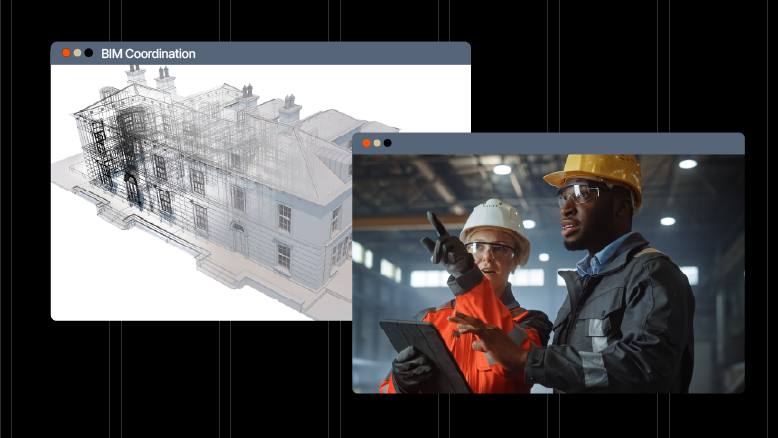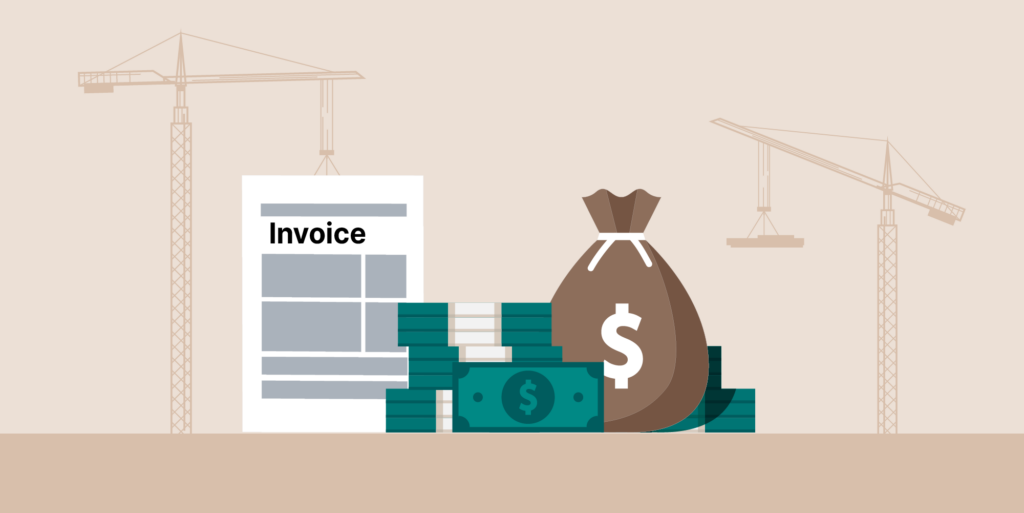— 7 min read
Understanding & Managing Construction Equipment Depreciation
Last Updated Mar 26, 2025
Last Updated Mar 26, 2025

Construction teams require equipment to do their work — and whether that equipment is purchased, rented or leased, it can represent significant costs. When a contractor purchases a new piece of equipment, the value of that asset is the amount paid for it. Over time, as the equipment ages, its value decreases. The process of accounting for that change in allotted value is called depreciation.
Tracking and managing depreciation of equipment (and other depreciable assets) are key aspects of financial management for construction firms. This article will discuss the importance of construction equipment depreciation and best practices for managing it.
Table of contents
The Basics of Equipment Depreciation
Depreciation is the systematic allocation of the cost of an asset over its useful life. In simpler terms, it's the way businesses account for the gradual decline in value of their assets due to wear and tear, usage or obsolescence.
Instead of deducting the entire cost of a major purchase in the year it's bought, depreciation allows companies to spread that cost out over the period the asset is expected to be used.
However, not all assets are depreciable. Construction companies can generally depreciate equipment because it is typically considered income-producing property: In other words, it is used to drive revenue for the company that owns it.
There are rules to calculating and reporting depreciation for construction equipment, including that the method can only be applied to tangible owned assets that have a measurable useful lifespan. Assets that are depreciated also have to be those used in the construction business to earn money.
Information Needed to Depreciate Construction Equipment
Financial pros need some key pieces of information before they can determine how best to depreciate equipment costs.
Original Cost
How much did it cost the business to buy the equipment? Include transportation fees, set up costs and taxes in this number.
Salvage Value
When the equipment has finished its stated lifespan, what will the sale price be for another user, parts, or the scrap yard? This can be calculated with the following formula:
Salvage value = Original Cost – (Annual Depreciation x Useful Life)Book Value
Book value is the standard value of a piece of equipment across the marketplace, used for tax and insurance purposes. Book value can be calculated as follows:
Book value = original cost – (annual depreciation x age)
Equipment Depreciation Methods
Depreciation can be handled in a few different ways, depending on the way a contractor’s accounting team decides offers the best advantage for the business.
Tax laws can change every year, leading to different methods and rules for depreciation, so business owners may be depreciating each piece of equipment differently.
Tanya Akimenko
Tax Accountant
Golden Apple Agency Inc.
The depreciation method for any specific piece of equipment is a strategic decision based on what’s available in that year, other depreciation methods currently being used and which will benefit the company’s ongoing finances the most. Here are a few methods construction firms often use.
1. Straight-line
This method spreads the cost evenly across the equipment’s lifespan. For example, a bulldozer purchased for $100,000 with a salvage value of $10,000 and a useful life of 10 years would have an annual straight-line depreciation expense of $9,000.
2. Declining Balance
This method accelerates depreciation, with higher expenses placed in the earlier years.
Take a truck that is purchased for $50,000 with a 20% declining balance depreciation rate. The first year's depreciation expense would be $10,000. The second year that 20% depreciation would bring the truck’s value from $40,000 to $32,000, and so on.
3. Units of Production
The actual usage of the equipment is used to determine the depreciation rate with this method. For example, if a machine that costs $30,000 with a salvage value of $5,000 is expected to produce 100,000 units over its lifetime, and it produces 20,000 units in a year, the depreciation expense for that year would be $5,000.
4. Bonus Depreciation
Bonus depreciations — also called additional first-year depreciation deductions — may be available to some businesses in certain years. They allow a business to accelerate depreciation of some assets in order to incentivize them to invest more dollars back in the business, Akimenko explained.
The Importance of Depreciating Equipment
Understanding depreciation can help contractors manage their equipment fleets in useful ways, like helping to make a decision of when to fix or discard it, predicting how long it will be until a new piece of equipment will likely be needed and knowing how to use depreciation to improve their tax situations.
Aligning Expenses With Revenues
Depreciation aligns with the matching principle of accounting. This principle states that expenses should be recognized in the same period as the revenues they help generate.
Equipment is purchased to generate revenue over several years. Depreciation allows a portion of the cost of that equipment to be recognized as an expense in each of those years, more accurately reflecting the costs associated with generating that period's revenue.
Reflecting True Value
Simply put, a company’s financial reports should reflect the true value of their assets. If a piece of equipment is bought for $100,000 and listed on the balance sheet at that value for its entire 10-year life, that's inaccurate. After a few years, the equipment is not worth $100,000 anymore.
Depreciation adjusts the asset's value over time, giving a more accurate picture of the company's financial position.
Better Decision-Making
Accurate financial reports are essential for making informed business decisions. Depreciation helps businesses:
Assess profitability.
By accurately matching expenses to revenues, companies get a clearer view of their profitability.
Plan for replacements.
Knowing when equipment is nearing the end of its useful life helps companies budget for replacements.
Manage cash flow.
Spreading out the cost of equipment over time can help companies manage cash flow more predictably.
Tax Implications
Depreciation is also important for tax purposes. In many jurisdictions, businesses can deduct depreciation expenses from their taxable income, which can reduce their tax liability. Accurate depreciation records are crucial for compliance.
Benchmarking
Following a consistent and recognized depreciation method makes financial statements more transparent and comparable. Investors, lenders and other stakeholders can more easily assess the company's financial performance and compare it to previous years, or to other companies.
Best Practices for Managing Equipment Depreciation
Effective equipment depreciation needs consistent information inputs that paint a clear picture of the useful life of the business’s assets. Here are some ways to get quality and continual information about the depreciation of equipment assets.
Print the depreciation record.
A construction company may have multiple pieces of equipment, tools and vehicles being depreciated at the same time, and it’s up to the business owner to understand the depreciation methods being used for each item.
It's always a good idea to print a depreciation schedule with each year’s tax return to be used for the business records. Although it doesn’t need to be submitted to the IRS with the tax return, a printed schedule is useful for internal purposes and in case of any future audit. It is up to business owners to know and understand the depreciation schedule their businesses use.
Tanya Akimenko
Tax Accountant
Golden Apple Agency Inc.
Keep full and up-to-date equipment logs.
Full and accurate information about when equipment is used and what maintenance tasks have been completed provides valuable information that can help with tax reporting and future purchasing decisions. Depending on the depreciation method used, accurate records of equipment use are necessary to get a good idea of an asset’s worth.
Assess equipment regularly.
Pieces of equipment are assets in a company — so it's important to keep an eye on them. Regular check-ups and assessments provide further details to records and depreciation rates, which can help drive everything from processes to financial decisions.
Use technology.
Tech tools can help track and manage equipment use, maintenance and depreciation over time by allowing teams to take and share notes and information across a company-wide, cloud-based platform. Tracking tools should integrate with financial technology apps to automatically supply all the information needed to depreciate the equipment accurately.
Use information to plan for the future.
One of the best tools that equipment depreciation can give a contracting business is a good grip on when it might become necessary to buy new equipment. Use that insight to make a replacement plan for the most essential equipment in the business.
It’s a good idea to do a tax planning session at least once a year in the fall to plan for equipment purchases and depreciation. October often works well for this planning session, because by then tax professionals will know which tax laws will be coming into effect for the following year.
Courses about construction.
For construction.
Unlock your career potential with our free educational courses on Health & Safety, Data in Construction, and more.
Managing Financials and Fleets
Equipment depreciation is an important tool for any construction company’s management of their financials and fleets. Contractors need to work with accounting and financial teams to understand how depreciation works and how it can impact their cash flow, tax reporting and budgeting efforts.
Contractors should take the time to review current record keeping and depreciation practices, and consider consulting financial experts on best managing the company’s valuable assets.
Was this article helpful?
Thank you for your submission.
0%
0%
You voted that this article was . Was this a mistake? If so, change your vote here.
Scroll less, learn more about construction.
Subscribe to The Blueprint, Procore’s construction newsletter, to get content from industry experts delivered straight to your inbox.
By clicking this button, you agree to our Privacy Notice and Terms of Service.
Categories:
Tags:
Written by
Kristen Frisa
70 articles
Kristen Frisa is a contributing writer for Procore. She also contributes to a variety of industry publications as a freelance writer focused on finance and construction technology. Kristen holds a Bachelor of Arts in Philosophy and History from Western University, with a post-graduate certificate in journalism from Sheridan College. She lives in Ontario, Canada.
View profileReviewed by
Tanya Akimenko
anya Akimenko is the founder of Golden Apple Agency Inc. She leads a team of business finance experts dedicated to helping entrepreneurs understand taxes, achieve financial clarity, and stay audit-ready through smart tax strategies and best-practice bookkeeping - empowering them to make better financial decisions for their businesses.
Explore more helpful resources

How to Understand and Use Architect’s Supplemental Instructions
Architect’s supplemental instructions, also known as ASI, offer a means of making small changes to the construction contract after it’s signed. The ASI is a document issued by the architect...
Improving Project Monitoring with Construction Quantity Tracking
Once a construction project is underway, builders need to closely monitor the project’s progress and make sure it’s staying on schedule and within budget. Quantity tracking helps construction leaders manage...

Streamlining Construction Projects with Effective BIM Coordination
The old saying goes: if you fail to plan, you plan to fail. Construction professionals know this better than nearly anyone. To take a project from a vision in an owner’s...

Construction Invoice Factoring: A Quick Guide
Construction companies need to maintain consistent cash flow. Projects can take years to complete, and delays and unforeseen events may keep expenses mounting. Adding to this load are typically high upfront...